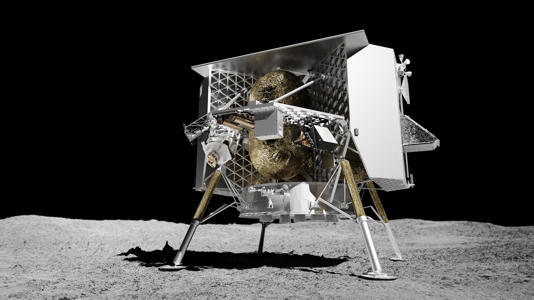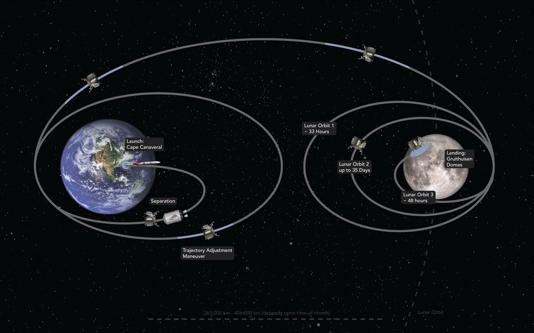New Mars Forums
You are not logged in.
- Topics: Active | Unanswered
Announcement
#26 2023-03-18 08:43:08
- Mars_B4_Moon
- Member
- Registered: 2006-03-23
- Posts: 9,776
Re: Lunar Cots Cargo
SpaceX launches 27th cargo mission to ISS
https://spacenews.com/spacex-launches-2 … on-to-iss/
NASA delivers hardware for commercial lunar payload mission
https://phys.org/news/2023-03-nasa-hard … yload.html
In 2024, as part of the NASA Commercial Lunar Payload Services (CLPS) initiative, Firefly Aerospace will land the "Blue Ghost" lander on the lunar surface. Onboard: the Lunar GNSS Receiver Experiment (LuGRE) payload will investigate whether signals from two GNSS constellations can reach the lander and provide precise navigation on the moon for future missions.
"LuGRE is a cutting-edge experiment, enabling us to expand Earth-based navigation systems to the moon," said Joel Parker, Principal Investigator for LuGRE.
The LuGRE payload is managed by NASA's Space Communications and Navigation (SCaN) program office, which oversees the agency's navigation portfolio and contributes to international navigation policies.
During a roughly 12-day mission in the moon's Mare Crisium basin, LuGRE is expected to obtain the first-ever GNSS fix on the lunar surface and receive signals from both GPS and Galileo, the European Union's GNSS constellation.
This payload is a collaborative effort between NASA and the Italian Space Agency to expand the bounds of Earth-based navigation systems. Over the past few months, navigation engineers at NASA's Goddard Space Flight Center in Greenbelt, Maryland, have been testing the payload's GNSS receiver and low noise amplifier, pictured below. The receiver, the heart of the LuGRE payload, was developed and built by the Italian company Qascom.
These components will be critical to LuGRE obtaining signals from the GPS and Galileo satellites. To prepare for operating at the moon, NASA engineers used a GNSS simulator to test and configure the payload to accurately receive and process the signals. As of February 2023, the Goddard team delivered the flight hardware to Firefly Aerospace in Cedar Park, Texas, where it will be integrated into the Blue Ghost lander.
With the Artemis missions, NASA and its partners are establishing humanity's presence on the moon. Astronauts and rovers traversing the rocky lunar surface will need precise location and tracking data for their exploration endeavors. The data gathered from the LuGRE payload will be used to further develop GNSS-based navigation systems for future missions to the moon.
Last edited by Mars_B4_Moon (2023-03-18 08:43:54)
Offline
Like button can go here
#27 2023-08-30 16:45:18
- Mars_B4_Moon
- Member
- Registered: 2006-03-23
- Posts: 9,776
Re: Lunar Cots Cargo
Our Blue Ghost lunar lander panels are lookin' good for our first mission to the Moon! Propulsion lines are nearly fully installed as we get ready to stack the in-house manufactured panels
Offline
Like button can go here
#28 2023-09-16 16:55:35
- Mars_B4_Moon
- Member
- Registered: 2006-03-23
- Posts: 9,776
Re: Lunar Cots Cargo
Firefly Aerospace Sets New Launch Speed Record for U.S. Space Force Mission
https://gizmodo.com/firefly-victus-nox- … 1850841861
Rocket Lab’s Peter Beck sells nearly $38m worth of stock (paywall)
https://www.nbr.co.nz/investment/rocket … -of-stock/
Offline
Like button can go here
#29 2023-11-30 19:37:57
- SpaceNut
- Administrator
- From: New Hampshire
- Registered: 2004-07-22
- Posts: 29,917
Re: Lunar Cots Cargo
US sets date for first Moon landing in 50 years
More than 50 years after the last Apollo space mission, the United States will try once again to land a craft on the Moon on January 25, said the head of what could be the first private company to successfully touch down on the lunar surface.
The lander, named Peregrine, will have no one on board. It was developed by American company Astrobotic, whose CEO John Thornton said it will carry NASA instruments to study the lunar environment in anticipation of NASA's Artemis manned missions.
Several years ago, NASA opted to commission US companies to send scientific experiments and technologies to the Moon – a program called CLPS.
Offline
Like button can go here
#30 2023-12-02 18:13:52
- SpaceNut
- Administrator
- From: New Hampshire
- Registered: 2004-07-22
- Posts: 29,917
Re: Lunar Cots Cargo
The Peregrine Lunar Lander is set to launch on Dec 24. Here's what it'll bring to the moon
Peregrine Lunar Lander, named for the fastest flying bird on Earth. If all goes to plan, the robotic avian will zoom through space and fly into the moon's gravitational tides, then meticulously lower its orbit until eventually touching down on a region of ancient lunar lava flows known as the Bay of Stickiness, or Sinus Viscositatis.
Peregrine will be lifting off on the first flight of United Launch Alliance's Vulcan Centaur rocket. The successor to the company's Atlas V and Delta IV vehicles, Vulcan Centaur is, among other things, built to carry quite a hefty amount of stuff to space.
And during a briefing on Nov. 29, representatives with Astrobiotic, United Launch Alliance and, of course, NASA, gathered to discuss what some of the Peregrine payloads are going to be as well as lay out how everything is expected to go down the day before Christmas.
There are five total NASA-sponsored payloads heading to the lunar surface during the mission, and the first is known as the "Peregrine ion trap mass spectrometer," or PITMS.
PITMS will be investigating the lunar exosphere, which is a thin gaseous envelope around the moon, by tapping into mass spectrometry. Mass spectrometry simply refers to the technique scientists use to measure the mass-to-charge ratio of ions, which are charged particles like hydrogen atoms that hold a positive proton, but no negative electron to balance the proton out.
"The science results from PITMS will aim to improve our knowledge of the abundance and behavior of volatiles on the moon and how they respond to perturbations such as rocket exhaust,"
"Most of the time between launch and landing is actually waiting for the local lighting to be correct. So basically, we're trying to land at a specific spot on the moon, at a specific time in the morning."
Once everything looks good, the spacecraft will lower onto the surface at the designated landing site. The lander will operate for about 10 days before the sun sets, leading to the same lunar night that saw India's Chandrayaan-3 lander fade away.
"It'll go from a relatively warm 100 to 120 degrees Celsius down to liquid nitrogen cold," Thornton said. "It will stay that way for two weeks, and typically with the temperatures in that range, there's lots of things that break."
Offline
Like button can go here
#31 2023-12-28 16:36:58
- Mars_B4_Moon
- Member
- Registered: 2006-03-23
- Posts: 9,776
Re: Lunar Cots Cargo
SpaceX HLS Starship Variant
Offline
Like button can go here

